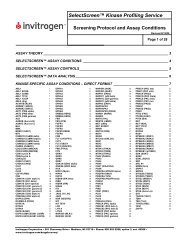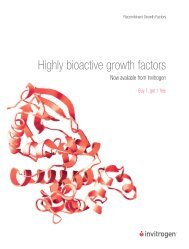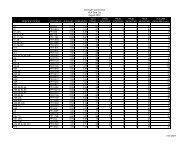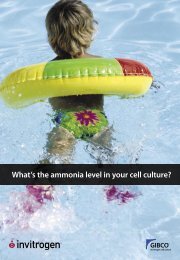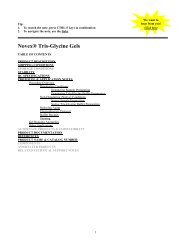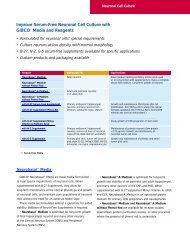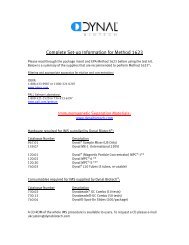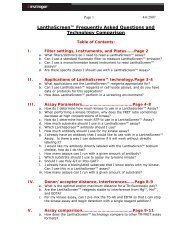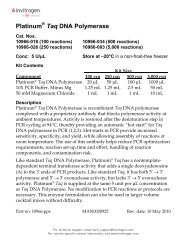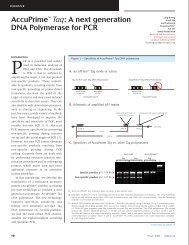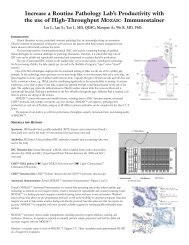TRIzol Reagent - Invitrogen
TRIzol Reagent - Invitrogen
TRIzol Reagent - Invitrogen
You also want an ePaper? Increase the reach of your titles
YUMPU automatically turns print PDFs into web optimized ePapers that Google loves.
5. Mix the tube contents by inversion and store for 5 min at room temperature. If the expected DNA yield is less than 20<br />
µg, add a microcarrier such as glycogen to the aqueous phase prior to isopropanol addition and mix.<br />
6. Sediment DNA by centrifugation at 12000 x g for 5 min at 4-25°C and remove the supernatant. Wash the DNA pellet<br />
with 1.0 ml of 75% ethanol and proceed with DNA solubilization as described in Step 3.<br />
Note about pH<br />
(back to Table of Contents)<br />
(back to Protocol and Application Notes)<br />
(back to DNA Isolation with <strong>TRIzol</strong>)<br />
The pH of the DNA should be adjusted to desired pH prior to further manipulation (i.e., PCR, restriction enzyme digestion, etc.).<br />
Once pH is adjusted, DNA can be used directly in PCR.<br />
Single-stranded DNA and <strong>TRIzol</strong><br />
(back to Table of Contents)<br />
(back to Protocol and Application Notes)<br />
(back to DNA Isolation with <strong>TRIzol</strong>)<br />
Single-stranded DNA will separate with the DNA phase.<br />
Use of DNA for restriction enzyme digests<br />
(back to Table of Contents)<br />
(back to Protocol and Application Notes)<br />
(back to DNA Isolation with <strong>TRIzol</strong>)<br />
Restriction Enzyme digestions with DNA isolated by the <strong>TRIzol</strong> method may require excess enzyme (3-5 U/µg) and extra time (3-<br />
24 hrs).<br />
Troubleshooting DNA isolation with <strong>TRIzol</strong><br />
Low Yield of DNA/DNA Degradation<br />
(back to Table of Contents)<br />
(back to Protocol and Application Notes)<br />
(back to DNA Isolation with <strong>TRIzol</strong>)<br />
Incomplete homogenization/lysis of samples. If any solid material remains after chloroform is added, this indicates that<br />
DNA yield may be poor, as DNA will remain trapped in the "unhomogenized" material.<br />
Final DNA pellet not fully redissolved. It can take several hours to resuspend the DNA. Some incubation at 37°C between<br />
pipettings will help. Also make sure that it is not too concentrated or it won't go back into solution. If the DNA is not fully<br />
redissolved, it will be lost during the final spin when removing the gel-like material.<br />
Tissues not IMMEDIATELY processed or frozen after removal from animal.<br />
Samples were homogenized with a high-speed homogenizer. DNA shearing happens.<br />
If expected yield is



